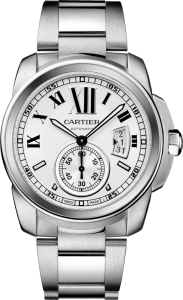Watch Movements (Part 2)
Welcome back to our educational series on watch movements! In the first part of this two part series, we covered everything you need to know about manual movement watches and their parts. In this section, we will be covering quartz movement, as well as automatic movement. Enjoy the article, and we hope you learn more about watches!
Quartz Movement:
Watches that use quartz movement are the most popular form of watches in the modern day. Why might that be? Quartz movement uses a battery as its main source of power – which is the kind of watches that most people wear. And there is a good chance that you are wearing a battery powered watch! Unlike other types of watches and clocks, quartz movement gives the wearer the most accurate way to tell time (aside from smart watches).
In this sense, the battery is the source that powers this type of movement. For the most part, these batteries only last between 12 and 24 months. If you ever find that the battery on your watch has died, it is crucial to get it replaced as quickly as possible. If not, there is a possibility that the battery could leak acid, which would ultimately damage the movement and the entire watch.
Automatic Movement:
Somewhat similar to a manual movement watch is an automatic movement watch. The largest difference between the two is that unlike the manual counterpart, automatic movement watches are self-winding, or “automatic.” This type of watch movement was introduced in the 19th century.
That being said, the watch itself and the automatic movement will not move forever, and many people who own or who have owned an automatic movement watch will find that after a while, the watch will need a manual winding.



